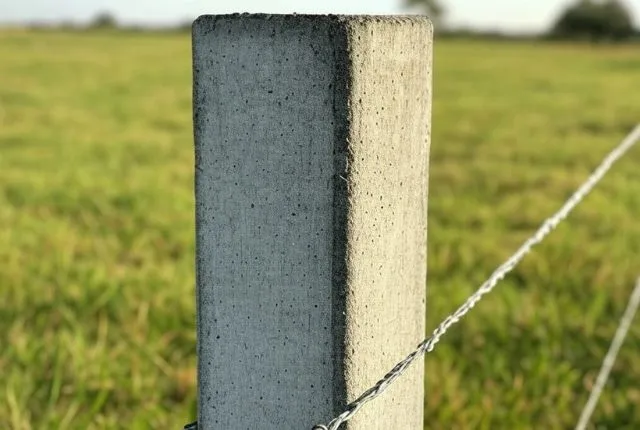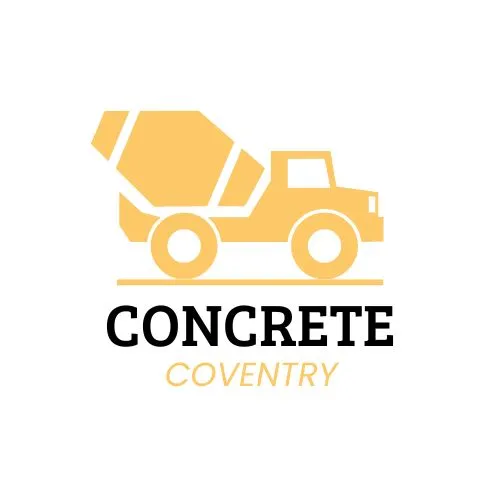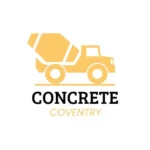Fence post concrete is a mix, made to hold fence posts securely in place. It provides durability, strength, and resistance against weather elements, ensuring your fence remains stable for years. There are various types of fence post concrete, each is designed for specific installation requirements, soil types, and weather conditions.
In this guide, we’ll break down what is fence post concrete, its various types, key selection factors, and installation process to help you build a sturdy and long-lasting fence.
Understanding Fence Post Concrete and Different Types of Concrete to Use
Choosing the right concrete mix is essential for a stable and long-lasting structure of fence posts. Different types of concrete offer various benefits depending on the project’s requirements, such as curing time, strength, and resistance to external factors like moisture or soil type. ConcreteContractors02816 suggests these concrete types for the optimal outcome:
Fiber-Reinforced Concrete
Fiber-reinforced concrete is a specialized mix. It includes synthetic or natural fibers to enhance strength and durability. This type of concrete is commonly used for fence posts because it resists cracking, improves load-bearing capacity, and performs well in various weather conditions.
The fibers distribute stress more evenly, making the concrete resistant to shrinkage and impact damage. Fiber-reinforced concrete fence post installation provides excellent long-term stability for fence post installations.
Pros:
- Increased resistance to cracking and shrinkage.
- Enhanced durability against weather conditions.
- Reduced need for steel reinforcement.
- Better load-bearing capacity for fence posts.
Cons:
- Higher cost compared to standard concrete.
- Comparatively more challenging to mix and pour evenly.
- Require special handling during installation.
Air-Entrained Concrete
Air-entrained concrete is a specialized mix that contains tiny air bubbles within its structure, which enhances its durability and resistance to freeze-thaw cycles. It is an ideal choice for outdoor concrete applications, especially in areas with extreme weather conditions. The air bubbles create a cushion effect that helps the concrete resist cracking and damage caused by freezing and thawing.
While it offers many advantages in durability and longevity, it is crucial to mix the concrete correctly to ensure the appropriate air content. For fence post installations exposed to harsh elements, air-entrained concrete is a top choice for ensuring long-term performance and reliability.
Pros:
- Increased resistance to freeze-thaw damage
- Reduces the risk of cracking under temperature fluctuations
- Enhanced durability for outdoor applications
- Improved workability and ease of application
Cons:
- Lower compressive strength than non-air-entrained concrete
- More expensive due to additional processing
Rapid-Setting Concrete
Rapid-setting concrete is specially designed for situations where quick curing is necessary. Unlike regular concrete, it sets between 20 to 40 minutes, allowing for a faster construction process. This concrete mix is ideal when time is of the essence or when working in areas where conditions may change rapidly.
Its ability to cure quickly ensures that posts remain in place and secure within a short time. With its high initial strength, rapid-setting concrete minimizes the risk of fence posts shifting or tilting during the curing process. It also reduces the time workers spend waiting for the concrete to set, which can improve overall efficiency for your project.
Pros:
- Sets and cures much faster than traditional concrete
- Allows for quick fence post installation
- Reduces downtime and minimizes project delays
- Provides reliable initial strength and stability
Cons:
- A short working window requires a fast application
- More expensive than standard concrete
- Less flexibility in adjusting once the mix starts to set
High-Strength Concrete
High-strength concrete is designed to offer superior load-bearing capacity and durability. This concrete type is ideal for applications where the structure will face heavy loads or needs to withstand significant pressure. It is particularly beneficial for fence posts in areas where the fence must support large, heavy materials or endure harsh environmental conditions.
High-strength concrete contains more cement and carefully chosen aggregates, allowing it to withstand stress over time. Its enhanced resistance to cracks and damage also extends its lifespan. High-strength concrete is suitable for long-term investments and projects demanding maximum stability.
Pros:
- Provides superior strength and load-bearing capacity
- Long-lasting and durable, even in harsh conditions
- Reduces the risk of cracking and damage
- Suitable for high-demand applications
Cons:
- More expensive due to higher-quality materials
- Longer curing time compared to fast-setting mixes
- Requires skilled handling for proper mixing and placement
Fast-Setting Concrete
Fast-setting concrete is a pre-mixed concrete that hardens more quickly than traditional mixes. Typically, it sets within 30 minutes, allowing rapid fence post installation. This concrete is ideal for projects requiring quick completion or fast post-setting. One of the key benefits of this mix is that it achieves initial strength quickly, allowing you to continue with the rest of the installation without delay.
However, the fast setting time also means that you have less time to adjust or reposition the posts, so it requires precise application and careful planning. This concrete is especially advantageous in warm climates, where weather conditions influence curing times.
Pros:
- Sets quickly, allowing for faster installation
- Ideal for projects that require quick turnaround times
- Provides high early strength, ensuring stability
- Less waiting time before you can continue work
Cons:
- Less working time before the concrete sets
- More expensive than regular concrete
Factors To Consider When Choosing Concrete For Fench Post

Selecting the right concrete for your fence posts involves considering various factors that can affect the stability and longevity of the fence. The soil type, weather conditions, and material of the fence posts all play a significant role in choosing the best concrete mix.
- Soil Type: Different soil types, such as sandy, clay, or rocky, affect how concrete sets and supports the fence post. Soil with high moisture content or poor drainage may require a stronger, more durable mix to prevent erosion or shifting.
- Weather Conditions: Harsh weather conditions, like extreme heat or cold, impact concrete curing and strength. In freezing temperatures, air-entrained concrete may be necessary, while rapid-setting concrete is ideal for hot weather to prevent premature drying and cracking.
- Fence Post Material: The material of the fence post, such as wood, metal, or vinyl, influences the choice of concrete. Wood posts, for instance, may need extra protection against moisture, while metal posts may require a stronger, more robust concrete mix to ensure proper anchoring.
Guide To Using Concrete For Fence Posts
To ensure a sturdy and durable fence, using concrete correctly is essential. This guide will walk you through the key steps: preparation, mixing, and setting the post, ensuring your fence is built on a solid foundation.
- Preparation: Start by digging a hole slightly wider than the fence post. Make sure the hole is deep enough to secure the post firmly. Clean the hole of any debris or loose soil to ensure stability.
- Mixing Concrete: Follow the manufacturer’s instructions when mixing concrete. Typically, you’ll need a ratio of water to dry mix. Stir until the consistency is smooth and free of lumps, ensuring an even spread.
- Setting The Fence Post: Place the post in the center of the hole and ensure it is straight. Pour the mixed concrete into the hole around the post, filling it to the top. Allow it to set for several hours.
Conclusion
Fence post concrete comes in various types, each offering unique benefits based on durability, setting time, and strength. You need rapid-setting concrete for quick installation, high-strength concrete for long-lasting support, or air-entrained concrete for weather resistance. Choosing the right mix is essential for a sturdy and reliable fence. Understanding these options ensures that your fence remains secure for years.
If you’re looking for a professional concrete fence post installation in Coventry, RI, contact us today. We provide high-quality materials, expert craftsmanship, and efficient service to ensure a flawless installation.
Frequently Asked Questions
How long does the fence post concrete take to set?
Standard concrete typically sets in 24-48 hours, while fast-setting concrete can set in 20-40 minutes. However, full curing may take up to a week before the fence is fully load-bearing.
Do I need to add gravel before pouring the concrete?
Adding a gravel base (around 2-6 inches) helps with drainage and prevents water buildup, which can weaken the post over time. It is especially useful in areas with heavy rainfall or poor drainage.
How deep should a fence post be set in concrete?
A general rule is to bury 1/3 of the post’s height in the ground. For a 6-foot fence, the post should be at least 2 feet deep. In colder climates, dig below the frost line to prevent heaving.

